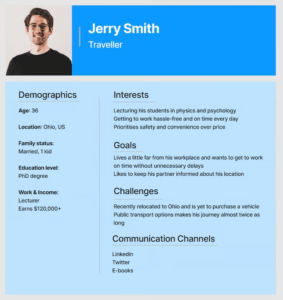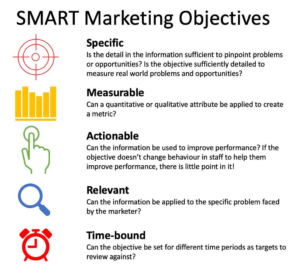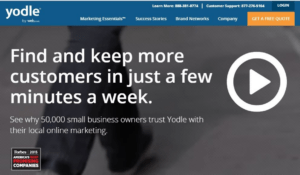

Do you know that 73% of consumers point to customer experience as an important factor in their purchasing decisions? So, it’s actually not just about the product itself; the overall customer experience plays a pivotal role in influencing their decision to return and make additional purchases.
It should go beyond providing a transactional exchange and extend into creating a seamless, positive, and memorable interaction at every touchpoint. This extends to how you engage with them visually and emotionally
In this case, creating customer-centric videos is an essential strategy for modern businesses.
This type of video marketing does not only capture the attention of your customers but also forge a deeper, more meaningful connection that can lead to increased loyalty, brand advocacy– and, ultimately, long-term success.
But, now, a question that’s on everyone’s lips is: “How do you even create customer-centric videos?”
Before we get into the details about customer-centric videos, let’s make sure we’re on the same page about what exactly is a customer-centric video.
What is a Customer-Centric Video?
In essence, a customer-centric video is a piece of visual content specifically designed with your target audience in mind. It’s a video that speaks directly to their needs, desires, and pain points.
Unlike generic promotional videos, which often focus on the product or service itself, customer-centric videos place the customer at the heart of the narrative.
Customer-centric videos can come in various forms, each tailored to address specific customer needs and preferences. Here are some common examples that you’re already familiar of customer-centric videos:
- Customer service videos (Q&As).
- In-app video calling
- Tutorial or product demonstration videos
- User-generated content
- Company culture videos
Creating Customer-Centric Videos: A Step-by-Step Guide
Now that we’ve explored the concept and various examples of customer-centric videos, it’s time to dive into the process of creating them if you are not planning to hire freelancers to make videos.
Crafting videos that truly resonate with your audience requires a thoughtful approach and careful planning.
1. Get to Know Your Audience
Understanding your target audience is the foundation of creating customer-centric videos. You can’t say that you make customer-centric videos if you don’t even know your audience in the first place. Utilizing a voice enhancer can further refine your message and engage your audience effectively.
Here are some tips to understand more about your audience:
- Identify your customers’ challenges: How will you ever serve your customers if you don’t know the challenges they face? So, understand your customers’ issues and what it is they are looking for. A brand persona can come in handy for this. Inviting your lead into a personalized video call is also beneficial, as you will learn their preferred strategy and move according to that.

- Conduct market research: Market research tools comes in handy in creating buyer personas and gathering insights into their demographics, interests, pain points, and preferences.
- Use surveys, reviews, and direct interactions: These are excellent ways to gather quantitative data about your audience’s preferences, expectations, and interests.
- Analyze reviews on platforms like Yelp, Google, or your own website can uncover recurring themes, pain points, and positive experiences. Look for keywords and sentiments that can guide the tone and messaging of your videos, and consider using the top keyword research tools to optimize your content further.
The more you know about them, the better you can tailor your video content to their needs. Utilizing the best AI video generator can simplify this process, offering personalized content creation based on audience insights.
2. Understand Your Goals
After you’re confident that you know your audience so well, it’s time to understand your goals. Ask yourself these questions:
“Why do I want to create this video?”
“What specific action do I want the viewer to take after watching the video?”
“How will this video benefit my audience?”
“What key message do I want to convey?”
Your answer to those questions will help you stay focused and ensure that your video serves a specific purpose. It’s the compass that will guide your video creation process and make it more effective in catering to your customer’s needs and preferences. This is where an online video editor can be an invaluable tool, helping to bring your vision to life with professional flair.
You can use the SMART formula for your customer-centric video objectives:

3. Craft Compelling Stories
There’s no such thing as hard-selling, customer-centric videos. To make your videos more genuine and relatable, use storytelling techniques. Everyone loves stories, and when you tell a compelling narrative, you have the power to captivate your audience, make a lasting impression, and improve customer retention.
For example, you can recount the journey of a customer who struggled with a problem your product or service solves. Share their challenges, emotions, and the transformation they experienced after using your offering.
This kind of narrative humanizes your brand. It makes it a lot easier for your audience to connect with the real people behind the product. More than 88% of consumers say authenticity is important when deciding what brands they use.
So, when viewers see themselves in the story, they’re more likely to engage with your video and trust the message it conveys.
Here are some actionable practices:
- Avoid unnecessary complexity. A straightforward and concise narrative is more likely to resonate.
- Remove any unnecessary elements that don’t directly contribute to the customer’s journey or the story’s impact.
- Another way you can craft a compelling story is by reaching out to satisfied customers and asking if they would be willing to share their experiences on camera.
Remember to build your video narratives around real-life scenarios that your customers have faced. Use their feedback to identify pain points, challenges, and solutions.
→ This allows your audience to see themselves in the stories you present and make the content more relatable and engaging.
4. Video Editing
Creating customer-centric videos is important, and the video editing process plays a crucial role. By utilizing a video editor or AI video editing tool, you can refine your footage, add relevant visuals, music, and text overlays that enhance the viewer’s experience. Video editors provide the tools necessary to craft a polished and professional video that aligns with your storytelling and messaging goals. Effective video editing like creation of good video intros, significantly enhances the impact of your customer-centric videos and encourages your audience to take action. Additionally, these editors enable you to create realistic voiceovers and ai voice cloning for your videos, adding an extra layer of authenticity and engagement to your visual content. You can also use the video translator for global engagement of your videos.
5. Tailor Your Message
The way you deliver your message in a customer-centric video is just as important as the story you tell. To ensure that your video resonates with your audience, you need to tailor your message to their specific needs, desires, and pain points.
Personalized messaging on websites can improve conversion rates by up to 80%. You need to do the same for your videos as well. Use language that your target audience understands and relates to. Avoid jargon or technical terms that might alienate or confuse viewers.
Instead, opt for clear and straightforward communication that mirrors the way your customers talk about their challenges and aspirations.
Understand Your Customer’s Expectations
6. Focus More on Benefits, Not Features
One common mistake in creating customer-centric videos is overemphasizing the features of a product or service at the expense of highlighting the benefits it provides to the customer.
While it’s important to explain what your product or service does, focus on the benefits it offers. How does it make your customers’ lives easier, more enjoyable, or more efficient?

Customer-centric videos should always approach the product or service from the customer’s perspective. This means that viewers are more interested in what the product can do for them and how it will improve their lives or solve their problems.
7. Feedback Loop in Videos
Feedback Loop in Videos is a fancy way of saying, “Let’s chat with our customers through videos and sort things out.” It basically means that you’re making a video where you directly tackle the questions and issues that customers often throw our way.
Not only does it give your brand a personal touch, but it also humanizes it. It shows that you’re not just a faceless company, but you’re real people addressing real concerns. Now, instead of drowning in repetitive responses to the same old questions, you can make videos.
The video can answer questions, offer solutions, and show off how your product can save the day. Also, it’s always better to end each video by saying, “Hey, got more thoughts? We’re all ears!”
It’s like turning customer feedback into an ongoing conversation, making your brand feel like a friend who’s not just listening but also evolving based on what people have to say.
8. Add a Call to Action (CTA)
Just because you should focus on benefits more while creating a customer-centric video doesn’t mean that you can afford to skip a clear call to action. In fact, a well-crafted CTA is the bridge that guides your viewers from engagement to action.
Ensure that your CTA is prominently placed within the video, usually towards the end. Viewers need to be sufficiently engaged and informed before they’re ready to take action.
However, you can also consider placing a secondary CTA earlier in the video to capture the attention of those who might not watch until the end. Here’s an example:

To ensure that your CTA speaks to your audience, consider the customer feedback. We’ve talked about feedback quite a lot before, but customer feedback essentially acts as a compass, directing businesses toward crafting CTAs that genuinely resonate.
Customer feedback reveals nuances in customer behavior and preferences. That’s how you can make decisions on language, tone, and placement of CTAs. This data-driven approach ensures that your calls to action are not only compelling but also strategically positioned within your content.
9. Make It Concise and Genuine
Attention spans are short, so keep your customer-centric videos concise. Aim to convey your message in a clear and engaging manner within a few minutes. If you have more information to share, consider breaking it into a series of shorter videos.
Also, one thing to bear in mind here is that authenticity is built on honesty and transparency. Authenticity here is just like being genuine. Don’t exaggerate or make false claims in your videos– just to appease your customers. Instead, be straightforward about what your product or service can and cannot do.
It’s also not about perfection but about being genuine and sincere in your communication. That’s why you might consider avoiding making it sound overly scripted. Encourage natural, unscripted dialogue and genuine reactions from the people in the video.
Wrapping Up: Take Your Customer-Centric to the Next Level
In conclusion, creating customer-centric videos is an art that goes beyond simply showcasing your product or service. It’s about understanding your audience, telling compelling stories, and conveying the benefits your offering brings to their lives.
By adopting a customer-focused approach, you can build strong emotional connections, foster trust, and inspire action.
To streamline all of those backbreaking processes in understanding your customers to create high-performing customer-centric videos, SurveySensum is a robust and handy tool. It gathers and analyzes customer feedback to provide actionable insights for your businesses. The platform utilizes survey tools, sentiment analysis, and other data analytics techniques to help you understand customer opinions, preferences, and sentiments.















